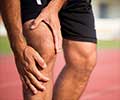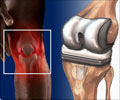- Meniscus Tears - (http://orthoinfo.aaos.org/topic.cfm?topic=a00358)
- Tear of meniscus - (http://en.wikipedia.org/wiki/Tear_of_meniscus)
- About Meniscal Tears - (https://my.clevelandclinic.org/health/diseases/17219-meniscal-tears)
About
Meniscal Tear can occur in anyone but the injury is more common among athletes.
A meniscal tear is a common knee injury. The meniscus is a C-shaped of cartilage found in the knee. There are two menisci in each knee joint.
A torn meniscus can occur in anyone; however, it is common among athletes, especially those who play contact sports.

Anatomy- Normal Knee
Three bones combine to form the knee joint--they are the thighbone (femur) above, the shinbone (tibia) below, and kneecap (patella) anteriorly. Two wedge-shaped or C-shaped pieces of meniscus, which are tough and rubbery fibro cartilage, function as "shock absorbers" between the femur and the tibia. They also help to cushion the joint and provide stability.
A meniscal tear usually occurs during activities such as walking or squatting, or any other forms of physical exertion involving a twisting movement of the knee while bending the leg. In older individuals, a meniscus injury occurs due to ‘wear and tear,’ often referred to as degenerative tear.
Meniscal tears can cause a lot of pain and swelling in the knee. Acute injuries, common to younger people, can result in symptoms such as clicking, catching, or locking and pain while using the knee. This pain usually subsides when you rest the injured knee. Sports-related meniscal tears may occur alongside other knee injuries, such as anterior cruciate ligament tears.
Meniscal tears Types
There are different types of meniscal tears of which the longitudinal tears are the most common.
There are different types of meniscal tears depending on the direction in which the tear takes place. They include:
Bucket handle Meniscal Tear - This type of meniscal tear in the knee is more common in younger patients. It is a longitudinal tear and involves displacement of the inner margin of the meniscus giving it a ‘bucket handle’ resemblance. It is capable of intermittently causing “locked knee” in acute cases, while in the chronic cases it would be resistant to repair. This tear is likely to be missed during evaluation, hence an MRI needs to be taken to diagnose the injury.
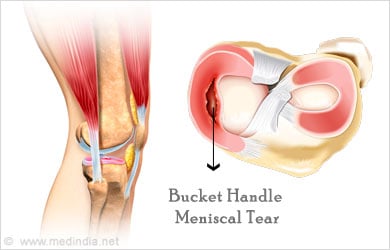
Horizontal meniscal Tear - Degenerative meniscal tears are mostly horizontal. These types of tears produce a upper and lower segments of the meniscus that do not move out of place.
Longitudinal Meniscal tear - Longitudinal tears occur on the outer side of the menisci parallel to the peripheral margin. The tears are usually in the blood-rich zone and heal well.
Posterior Horn Meniscal Tear of Medial Meniscus - The posterior part of the medial meniscus is the weight bearing and shock-absorbing part of the meniscus and for this reason, tears are quite frequent in this area. Symptoms of this kind of tear are pain, swelling at the back of the knee and locking. Only 10% of posterior horn meniscal tears are treatable. Treatment must begin at the earliest to prevent the onset of osteoarthritis.
Radial Meniscal Tear - These high energy tears start at the inner margin of the meniscus and go all through the meniscus dividing it into a front and a back piece. In this kind of tear there will not be disrupted fragments, but merely separation of meniscal parts.
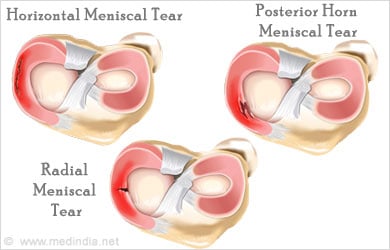
Flap Meniscal Tear - A flap tear usually occurs at the junction of the middle and posterior parts of the meniscus, resulting in the formation of a flap. The flap tends to intermittently open, causing symptoms to occur. The tear is easily managed by trimming away a part of the flap.
A complex tear involves a combination of any of the above- mentioned tears.
In the young, a meniscal tear occurs suddenly while in older people meniscal tear happens gradually as a part of the ageing process.
Meniscal tears can occur in the young and the old alike. In the young it is a sudden process that mostly occurs during

In older people meniscal tear happens gradually, as a part of the ageing process. Here, it is known as the degenerative meniscal tears as the cartilage wears out and thins with time, making it prone to tears. Twisting your knee, while trying to get up awkwardly, is enough to cause a tear in an older individual.
Common symptoms of meniscal tear include:
- Pain in the knee joint, especially while bearing excess weight
- Stiffness Swelling
- Catching or locking of the knee
- Reduction in range of motion
When a meniscus tear occurs, you may hear a ‘pop’ sound. Many people continue to walk or play with a meniscal tear. However, in a couple of days the knee is likely to become stiff and swollen.
If proper treatment is not administered, a piece of broken meniscus may break loose and reach the joint causing your knee to slip or lock.
The doctor will initiate diagnosis by enquiring about your symptoms and medical history. Diagnosis is confirmed with the help of imaging tests such as X-ray and MRI.
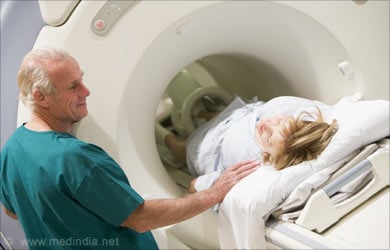
The doctor will initiate diagnosis by enquiring about your symptoms and discussing your medical history. He will then physically examine your knee and will check for tenderness, along the joint line where the meniscus is situated, as it is indicative of a tear.
The McMurray test is the most significant test for meniscal tears. To carry out this test, the doctor will bend your knee, then straighten it after which it will be rotated to exert tension on the meniscus. In case of a tear, a clicking sound will be heard during this movement.
You may also be asked to squat down. Pain, or an inability to squat will allow your doctor to localize the injury.
To confirm the diagnosis, imaging tests such as X-ray and MRI are recommended. X-rays do not reveal meniscal tears clearly but are capable of showing other problems affecting the knee like osteoarthritis. Magnetic resonance imaging (MRI), on the other hand, is capable of creating better images of the soft tissues and hence is capable of revealing most meniscal tears.
Meniscal tear treatment will depend on the type, size and location of tear. If symptoms continue to persist despite nonsurgical treatment, surgery is the option.
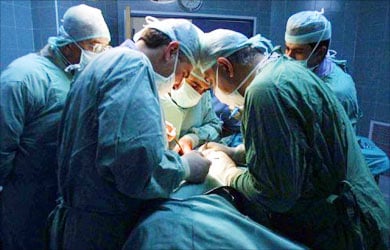
Meniscal tear treatment will depend on the type, size and location of tear, and also on your age, activity level and any other injury that you might have acquired.
A tear in the outside one-third of the meniscus, which has a rich blood supply is likely to heal on its own or can be rectified through surgery. The inner two-thirds, on the other hand, is devoid of blood supply and hence healing a tear that has occurred here is difficult. These tears are surgically trimmed away as they fail to grow back.
Non-surgical Treatment
A tear on the outer edge of the meniscus can be treated with non-surgical methods such as RICE, which stands for Rest, Ice, Compression, and Elevation.
- Rest. Take rest. You may have to take a break from all activities that put pressure on your knee. Your doctor may advise that you use crutches while moving around, to avoid putting weight on your injured leg.
- Ice. Use ice packs for 20 minutes at a time, several times through the day. Use a towel when applying ice. Avoid applying ice directly on the skin.
- Compression. Wear an elastic compression bandage around the knee to prevent additional swelling.
- Elevation. Recline with your leg placed on a higher level than your heart, to reduce swelling.
Nonsteroidal anti-inflammatory drugs (NSAIDs) may be administered to reduce swelling and pain while corticosteroid injections will help to cut down the inflammation. Physiotherapy will be advised to help regain knee joint strength.
Younger patients may need surgery more than older patients. If the injury is acute or if you are a very active person, then arthroscopy may be advised.
Surgical Treatment
If your symptoms continue to persist despite nonsurgical treatment, your may have to undergo surgery. Knee arthroscopy is a commonly performed surgical procedure. Here, a small camera is inserted through a tiny incision to generate a clear view of the inside of the knee. A miniature surgical instrument is inserted through the incision to trim away a tear (meniscectomy) or to repair it by suturing the torn pieces.
After surgery, your knee will be put in a cast or brace to restrict movement. Using crutches, while moving around, will help to take the pressure off your leg. After healing is initiated you may have to do strengthening exercises and exercises to improve your motility and range of motion.
With proper treatment, and rehabilitation patients often return to their normal lives.

